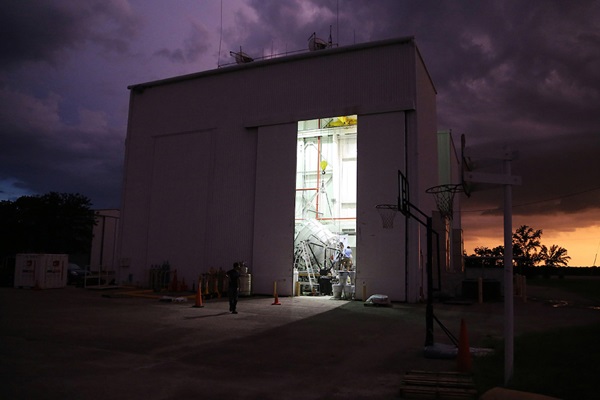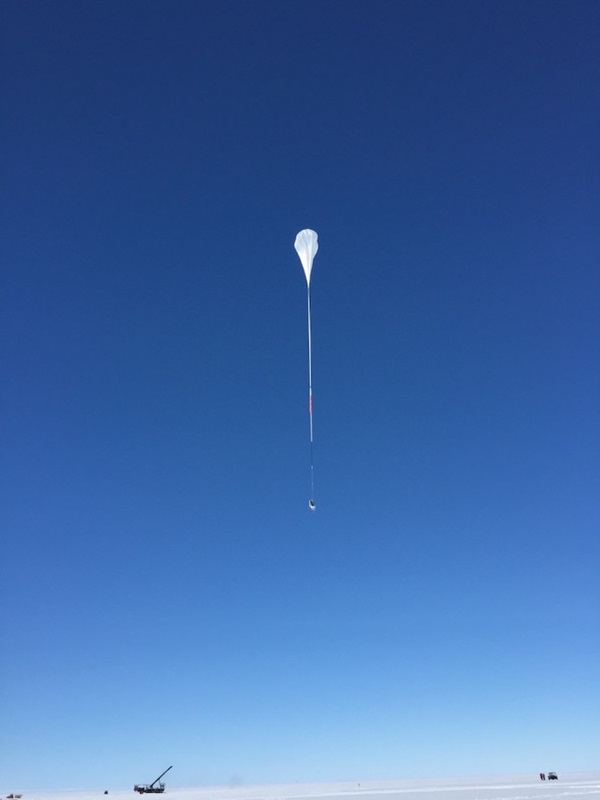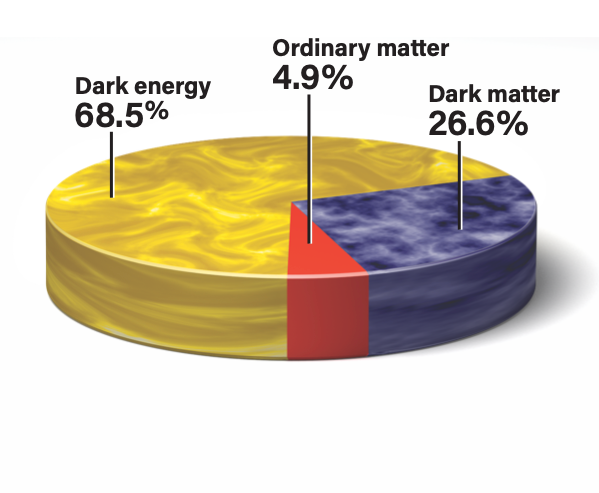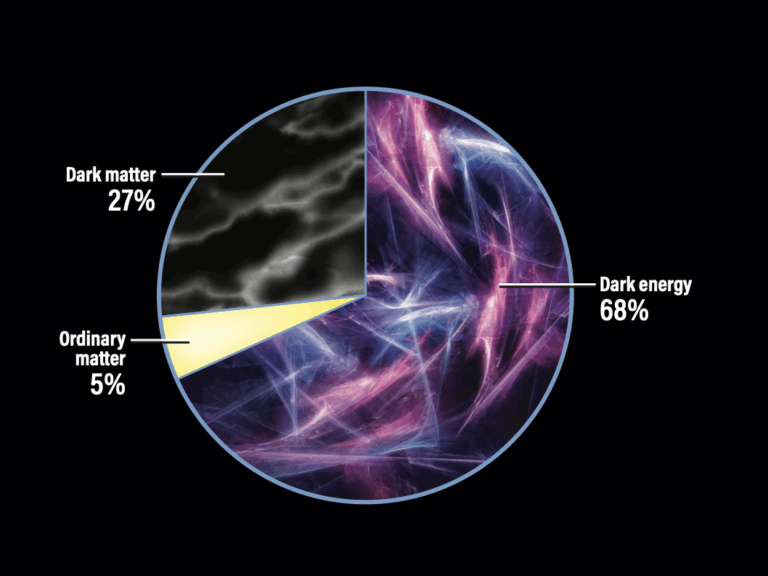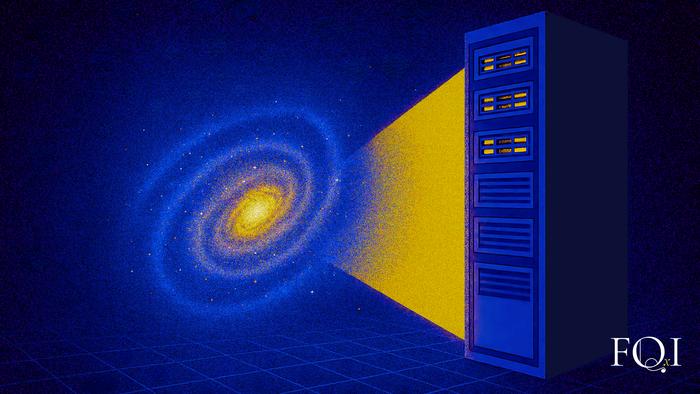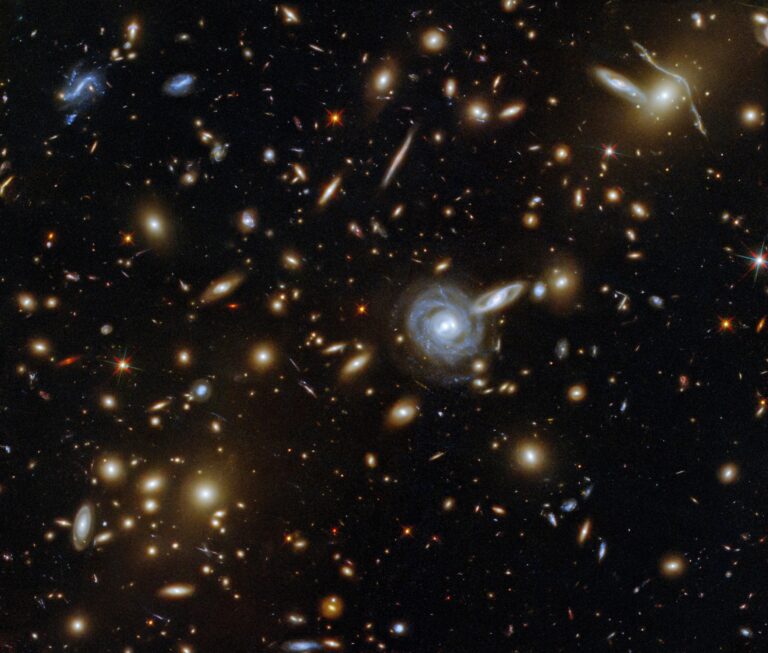Key Takeaways:
Named SPIDER (Suborbital Polarimeter for Inflation, Dust, and the Epoch of Reionization), the telescopes are designed to answer some of the most enduring questions about how quickly the cosmos expanded into existence. Data collected from SPIDER may also help researchers explain other curious aspects of the universe — such as its nearly uniform temperature and its exceptional flatness — which cannot be accounted for by the Big Bang theory alone.
For the past decade though, the research team, led by Jones, an associate professor of physics at Princeton University, has been dogged by more earthly matters: a government shutdown, uncooperative weather, and now, a global pandemic — all of which have cancelled launches. Since receiving funding in 2010, SPIDER has completed just one of two planned flights.
The delays have not only slowed scientific progress, but also the careers of the research team. Many of the scientists, like Gambrel — who had worked with Jones at Princeton before becoming a postdoctoral researcher at the University of Chicago in 2018 — have had to push back their dissertations or alter their research due to setbacks.
And SPIDER’s story mirrors the struggles of the cosmologists. The telescopes must brave harsh weather to collect painstakingly precise measurements. “Delays, challenges, and mishaps of one kind or another abound,” John Kovac, an astronomer at Harvard University who is leading a separate group of research missions to Antarctica, tells Astronomy. “[Gathering data] is a long-term investment and effort.”
But both SPIDER and scientists press on. That’s because experiments like this are one of the few ways to observe the extreme conditions of the early universe, where temperatures were a trillion times hotter than anything created in human-made experiments. And at those temperatures, our understanding of physics basically breaks down.
The laws of nature that we can study here on Earth are limited to what’s accessible to us, Jones explains. “And yet, who’s to say what laws of nature apply on much grander scales? And if you want to poke at that, you need to use the universe as a laboratory.”
A cosmological Hail Mary
Preparing SPIDER for flight — a multi-month, labyrinthine process that requires skill, intricate logistics, and some blind luck — is, according to Jones, the research equivalent of a Hail Mary pass in the last seconds of an American football game.
In order to launch SPIDER from McMurdo Station, Antarctica’s largest research facility, researchers must negotiate the whims of weather patterns in both the stratosphere 20 miles (32 km) above Earth and closer to the ground. Possible deployment dates are restricted to the winter months, when the polar vortex — a pattern of stratospheric winds — is strong enough to guide SPIDER’s flight in a predictable counterclockwise path around the continent. But scientists must also contend with weather immediately above McMurdo Station, as they require a 12-hour period of calm winds and clear skies to launch a balloon. Jones estimates there are about five such days per year, with some years going by without a single opportunity.
“The stakes are incredibly high,” he says, “if anything goes wrong, you could well sink your project for everyone on your team for a year.”
Sacrifices in the name of science
Anne Gambrel is familiar with the vicissitudes of balloon flight. She had worked with Jones as a graduate student in 2013, when the flight was cancelled by a government shutdown, and also in 2015, when SPIDER achieved its singular launch.
For Jones, Gambrel, and other researchers, preparing for a winter deployment to Antarctica is a grueling process that begins in June, when the team and telescopes travel from their homes in Princeton, New Jersey, to a NASA facility on the outskirts of Palestine, Texas.
Known as “the Texas-wringer,” the three-month stay is filled with long hours, as scientists practice unpacking and assembling SPIDER, and making sure it works with telemetry instrumentation provided by NASA. Perfecting logistics is critical because, in Antarctica, the team will only have a short amount of time to launch SPIDER before the polar vortex dissipates.
The isolation of Palestine — a small Texan town of 20,000 that’s surrounded by forests — also primes the researchers for the stresses and barren seclusion of Antarctica. In some ways, without the freshness of being on a new continent, the loneliness of being away from family and friends is worse in Texas. “We were all really tightly bound by our shared frustrations and the sacrifices we made,” Gambrel says. Being a tightly bound group “helped when times were bad,” she says, “and times were bad sometimes.”
In 2013, according to plan, SPIDER was shipped to McMurdo Station at the end of the summer. Meanwhile, the team returned to Princeton to recuperate for several weeks before their planned departure to Antarctica in mid-October.
It was during this fall break that Gambrel, then a third-year graduate student, learned of the impending government shutdown. “I remember Bill [Jones] telling us, ‘Yeah, it’s cancelled. We are not going this year,’” she says. “It was right after lunch and we just left for the day.”
According to Gambrel, the graduate students spent that afternoon at a friend’s house feeling sorry for themselves and calling Congress. “It was just a bad day,” she says, “We knew that it was going to be another year — a full year — before we could go again.”
Launch day: January 1, 2015
As was customary, nothing came easy for the SPIDER team in 2015, either.
Summoned at 3 a.m. on New Year’s Day by reports of good weather, researchers scrambled from their beds at McMurdo station to calibrate SPIDER and roll it out onto the launch pad, only to wait almost all day for the final go-ahead. Scientists passed the hours by chatting nervously with colleagues and going on picture-taking walks. Jones, meanwhile, distracted himself by reading an entire book, Colin Woodard’s American Nation, on the launch pad.
As high-altitude winds shifted, portending a scrubbed launch, the mood in the control room frayed from celebratory to anxious to manic. Gambrel, monitoring the temperature of the payload from behind an array of computers, was doing her best to stay patient and calm.
“I did not sleep the night before because everything we worked for was on the line,” she says. “We all had our check lists to go through — just over and over again … so I wanted to hurry up and go that morning.”
When the time finally arrived late in the day, SPIDER launched without a hitch.
First, a balloon that would eventually inflate to the size of a football stadium floated upward into a cloudless blue sky. Trailing underneath, a long cable connecting the balloon to SPIDER looped upward, pulling taut due to the entire contraption being pinned to the Earth by the clamps of a crane. Finally, with a clang, years of work, hope, and anxiety were released, allowing the telescope and balloon to ascend upward, growing smaller and smaller until they were indistinguishable from the rest of the sky.
“Launch day,” says Gambrel, “was one of the most memorable days of my life.”
SPIDER spies the Big Bang
For 16 days, drifting above the interference of the atmosphere, SPIDER had a clear view of light emitted from the Big Bang.
Such ancient light, known as the cosmic background radiation, has stretched with the expansion of the universe over time, which makes it invisible to the human eye. It’s only through the lens of SPIDER’s microwave telescopes (or others like it) that the radiation is brought into view, adorned with the imprints of gravity from the infant universe. When mathematically mapped, these fingerprint — embedded as distortions in the cosmic background radiation — can be visualized as pinwheel-shaped swirls across the sky.
“I’m in awe of having been able to work on a telescope that could tell us how the universe started,” Gambrel says. “Every day I get to look at pictures of the universe when it was barely, barely a thing.”
SPIDER beyond 2020
COVID-19 has forced Jones’ team, like many around the world, to overhaul their daily routines and redefine their goals.
A second launch would have been a critical opportunity for the SPIDER team to measure light using a wider range of wavelengths — an approach that would help mitigate the obscuring effect of galactic dust that has complicated data analysis so far. But instead of preparing for another flight, they are pushing ahead with whatever data analysis they can do while building more sensitive microwave detectors. So, despite SPIDER’s flight delays, several graduate students have completed dissertations based on building new instruments rather than obtaining new measurements from Antarctica.
For researchers, SPIDER is not only an opportunity to carry out great science, but a chance to develop additional skills, such as writing flight code and developing the complex systems that power and orient the telescopes. These talents help unlock many additional doors that simply analyzing cosmic background radiation might not.
I try not to focus on the uncertainty of the project, says Suren Gourapura, a second-year graduate student who joined the lab in January, months before Princeton University shut down. “As long as I’m continually learning things and becoming more a part of the team. That’s really the focus for me.”
The continual development of researchers’ abilities — with or without SPIDER flights — is crucial to Jones, who sees SPIDER as more than a science experiment. He says it is a program that “cultivates highly skilled personnel, like Anne [Gambrel], who can both realize the scientific potential of the immediate program, but also be in a position to discover the next big thing.”
Still, there is a limit to the work that can be done while SPIDER remains grounded, and the delays have undoubtedly taken a toll. “Frustrating doesn’t even approach the correct emotion that it evokes,” says Jones referring to launches that have been cancelled in the past two years due to bad weather and COVID-19 respectively.
The next earliest launch date, if everything perfectly according to plan, would be December 2021. But for now, all the team can do is wait.

